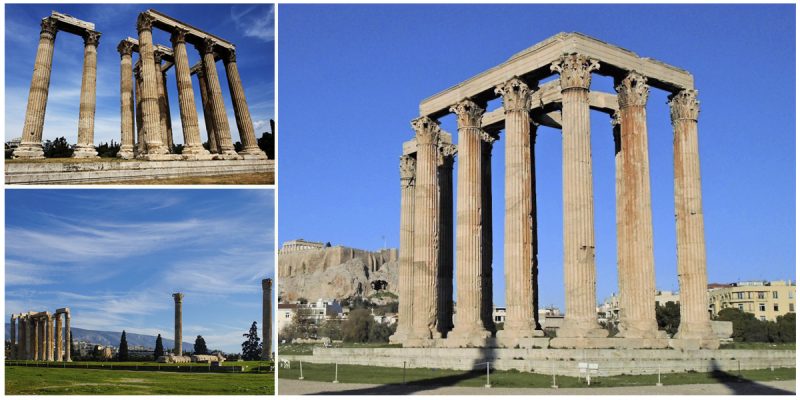One of the greatest monuments in Greece is the Temple of Olympian Zeus or Olympieion, located in Athens. It is a colossal temple dedicated to the Olympian god Zeus and is considered one of the largest temples built in the ancient world. By the orders of the ruler Peisistratos, its construction began in 6th century BC, on the site of a previous outdoor sanctuary dedicated to the Thunder God, but after a short time building stopped for unknown reasons.
Two possibilities are that the construction faltered because of lack of money or because Hippias, Peisistratos’s son, was overthrown. The project was not finished until 131 AD, during the reign of the Roman Emperor Hadrian. Over those centuries, a precinct wall was built around the temple, and several additions were made, including Roman baths and a monumental arch that is known as Hadrian’s Arch. Inside the building, the emperor erected a golden statue of Zeus and next to it soared one of himself of equal size.
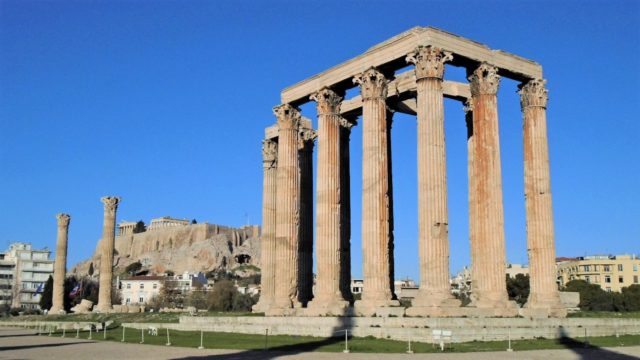
The temple’s unusually tall Corinthian columns, 104 in number, and its layout made it the most famous of its time. Unfortunately, the Olympieion’s glory was short because it was damaged by a barbarian invasion in 3rd century AD.
In medieval times, an earthquake destroyed some of the remaining parts. After that, it was a ruin, and no one was motivated to rebuild it. The temple was torn apart for building materials and many surrounding building projects benefited. Only a small part of the temple remains today, just 15 columns of this once grandiose structure.
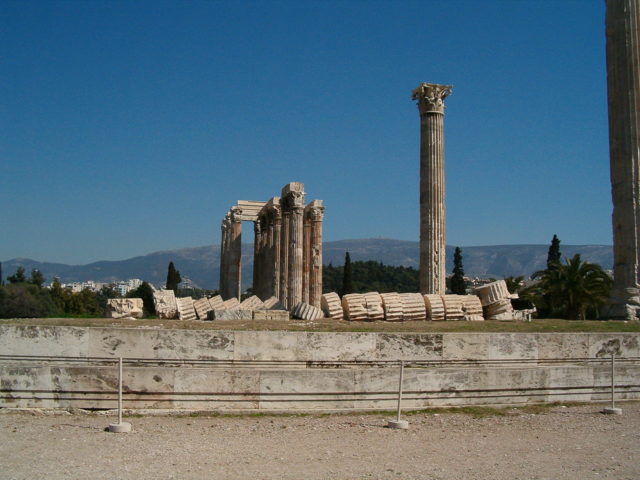
There was a 16th column, but it collapsed in 1852 in a storm. Today it lies across the site where it fell.
The Olympieion is a significant archaeological site. Historians believe it was designed by the famous Greek architects Callaeschrus, Antistates, Pornius, and Antimachides and built from local limestone in the Doric style.
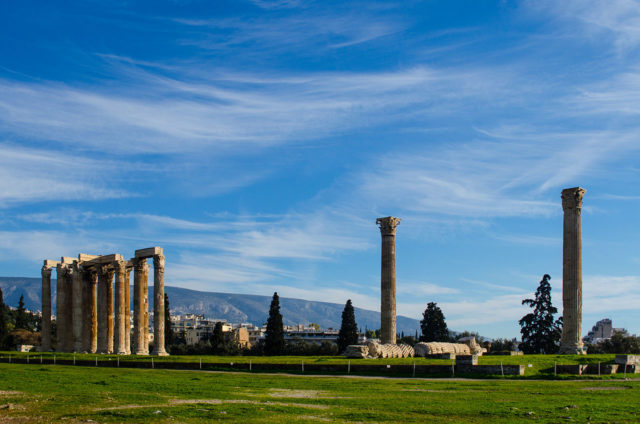
In 174 BC a king presented himself as the earthly embodiment of Zeus and his name was Antiochus IV Epiphanes. The king brought the faltered temple back to life and hired the architect Desimus Cossutius to make some changes, including the addition of several more columns, each 55.5 feet high and almost 6.5 feet in diameter.
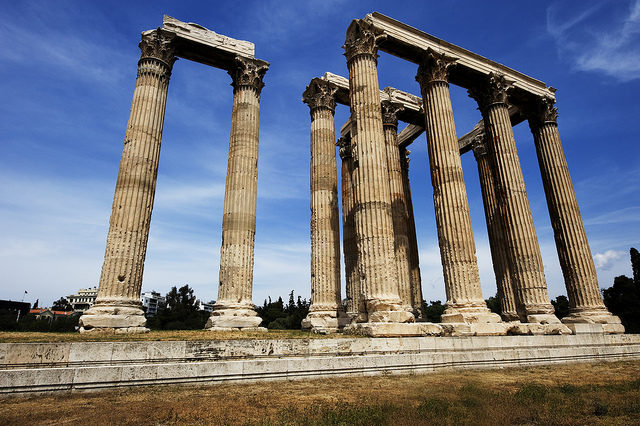
The style changed from Doric to Corinthian, and the columns were made from marble. After the king’s death, the temple was abandoned again, half-finished. In 86 BC, Lucius Cornelius Sulla severely damaged the temple, and it is known that he took some of the unfinished marble columns from the site and reused them as additions to the Temple of Jupiter on the Capitoline Hill in Rome.
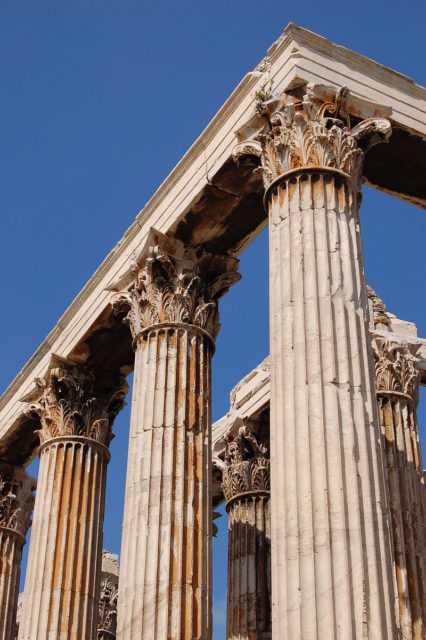
In the 2nd century AD, Hadrian made it a central focus of the city. Besides the great statues of Zeus and Hadrian in the temple, there were many other statues of gods and mythological creatures. It is believed that, with the massive statue of Zeus, Hadrian wanted to draw attention away from the magnificent statue of Athena in the Parthenon.
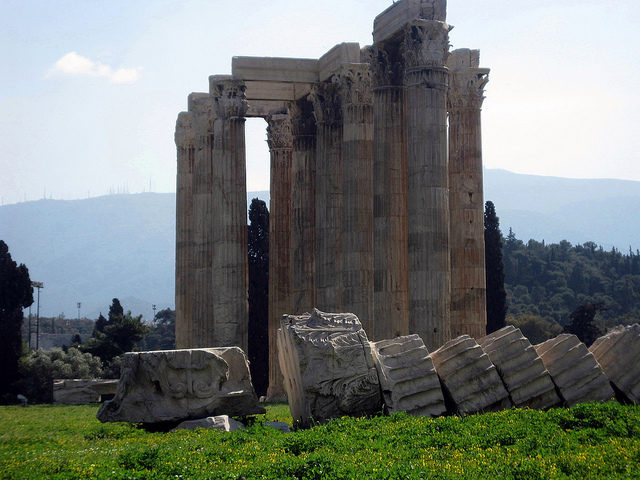
Those enormous statues are long gone, and nothing remains of the inner chamber.
It has been excavated several times in the past two centuries and continues to reveal fascinating information about the people who worked on the temple to the gods.
